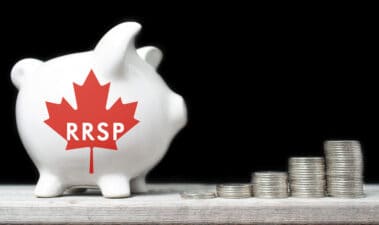Jeremy Grantham, the man who called the 2000 dot-com bust and the 2008 financial crisis, is back in the media spotlight, and this time he’s calling for some very weak returns over the next two decades.
In a recent interview conducted by CNBC, Grantham stated that “the U.S. market will be delivering real returns of about 2% or 3% on average over the next 20 years.”
Yikes!
Now, real returns are after inflation, so in simple terms, Grantham expects returns of around 4-5%, assuming the Fed’s target inflation rate of 2%. Still, those are very weak returns when you consider most investors have grown accustomed to the 9-10% in average returns from being invested in the markets over a long-term time horizon.
Upon hearing the less-than-sanguine expectations from Grantham, I wasn’t shocked in spite of the 9-10% in annual returns that Main Street now assumes. While I am taking Grantham’s prediction with a fine grain of salt, I’d like to shed more light on the possibility of a “heart-breaking” lower-return environment and how you can survive or even thrive.
Deep economic recessions or depressions may be black swan events, but they can happen, and they may happen at some point over the next two decades. Nobody knows how or when, but the point is that it can happen, and investors must be prepared for such a situation.
Most investors on the Street are chasing the sexy play with the goal of averaging a high double-digit percentage of return per year. An investment strategy of doing everything to maximize returns with little consideration for risk, which, while indeed sexy, can ultimately become the demise of an investor’s long-term results.
In an environment where lower returns are the norm, you’ll likely gravitate towards speculative holdings to obtain the high bar that you’ve set for yourself, in which case you’d be gambling, not investing.
So, how does one cope with the 2-3% annual return environment that Grantham sees on the horizon?
Adopt a risk-parity approach for your portfolio. Focus on risk-adjusted returns rather than real returns. The major mistake that most beginners make is setting the bar too high for themselves initially and setting themselves up to take on more risk than they’d actually be comfortable with, potentially maximizing the chances they’ll sell on a violent dip in the markets.
What’s the cure?
Adopt a risk-parity approach. You’ll be playing both sides of the coin and will have a game plan for whatever returns the markets post in a given year.
Consider Fortis (TSX:FTS)(NYSE:FTS), a highly regulated business that couldn’t care less about what the “new norm” for market returns will be moving forward.
You see, Fortis is a low-beta stock that’s mostly off in its own world. As a regulated company that pulls in cash flow regardless of the state of the economy, you’re pretty much guaranteed to get 5% dividend hikes every single year. And with few surprises on the horizon, the company’s growth projects will likely continue to clock in sustainable mid to high single-digit growth numbers for years, if not decades to come.
At current levels, you’re getting a dividend (currently yielding 3.74%) that’s yours to keep. And it’s poised to grow at 5% per year minimum. Given Fortis has a more-than-competent management team, the stock can be expected to post small upside surprises for a given year such that the stock could post a low double-digit total return.
With shares near fair value today, you’re essentially locking in a mid to high single-digit total return, which, while unimpressive relative to the assumed 10% given by the markets, is a heck of a lot more impressive if Grantham’s dystopian market environment comes to be. And unlike the 10% annual return assumption on the S&P 500, I believe the 6-13% return assumption on Fortis is a more realistic assumption to make given the high transparency in Fortis’s growth profile.
Of course, by the time everybody realizes a lower-return norm, the price of admission of Fortis stock will have already corrected to the upside such that you’ll probably just hit the new low market rates given the premium you’ll then pay.
So, what’s the takeaway?
Chase risk-adjusted returns, not just returns. On that front, it’s tough to beat Fortis.
Stay hungry. Stay Foolish.







